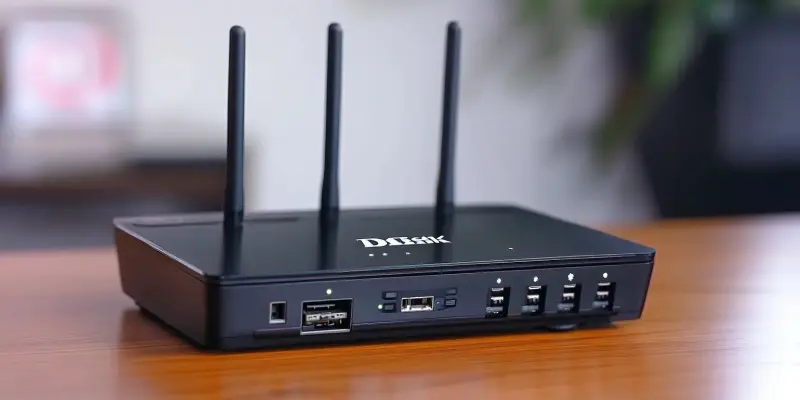In an era where cybersecurity threats continue to evolve, the discovery of targeted attacks on D-Link routers underscores the persistent dangers posed by outdated and unpatched network devices. Recent cyberattacks have prominently leveraged vulnerabilities in the Home Network Administration Protocol (HNAP) interface of D-Link routers. These security flaws have given rise to two aggressive botnets, FICORA and CAPSAICIN, which are exploiting these weaknesses to execute malicious commands remotely. Despite the availability of patches, many devices remain unpatched, leaving them susceptible to these threats.
Exploited Vulnerabilities and Botnet Techniques
Exploitation through HNAP Interface Flaws
The vulnerabilities being exploited in these attacks, identified by their CVE numbers – CVE-2015-2051, CVE-2019-10891, CVE-2022-37056, and CVE-2024-33112 – reveal the alarming risks linked to outdated hardware. The flaws in the HNAP interface of D-Link routers allow unauthorized remote access, leading to the execution of malevolent commands. This type of exploit can enable attackers to manipulate the routers, paving the way for a series of detrimental activities, including data breaches and the dissemination of malicious software. The persistence of these vulnerabilities, despite available remedies, points to a broader issue of negligence in applying timely software updates.
One of the key players in these attacks, the FICORA botnet, has evolved from the infamous Mirai malware, known for its brute-force techniques. FICORA goes a step further by using advanced encryption to conceal its configuration and command-and-control (C2) servers. This sophisticated botnet can initiate distributed denial-of-service (DDoS) attacks employing various protocols such as UDP and TCP, making it a formidable threat. The ability to obscure its operations and encrypt its communications makes FICORA particularly challenging to detect and neutralize, highlighting the importance of robust cybersecurity defenses.
The Differences Between FICORA and CAPSAICIN Botnets
In contrast to FICORA, the CAPSAICIN botnet adopts a different tactic by focusing on quick deployment and the eradication of rival malware. CAPSAICIN’s approach enables it to rapidly infect devices and eliminate competing threats, thereby consolidating its control over compromised networks. This rapid deployment strategy, coupled with its ability to remove other malware, makes CAPSAICIN a highly efficient and effective botnet. Even though it may not use advanced encryption like FICORA, its sheer speed in spreading and neutralizing competitors poses a significant risk to network security.
Researchers at Fortinet’s FortiGuard Labs have observed a marked increase in botnet activity during October and November 2024, underscoring the ongoing threat from legacy and unpatched devices. These security experts traced the origins of the FICORA botnet back to servers located in the Netherlands, though the attacks themselves have been global and opportunistic in nature. By targeting any vulnerable device indiscriminately, these botnets have been able to maximize their impact, demonstrating the urgent need for organizations and individuals alike to prioritize security updates and patches.
Mitigation Strategies for Enhanced Security
Importance of Regular Firmware Updates
To mitigate these ever-present risks, experts strongly advise performing regular firmware updates for all routers and network devices. Keeping firmware up-to-date is crucial in closing security gaps and thwarting potential exploits. The regular application of updates can prevent attackers from leveraging well-known vulnerabilities, thereby enhancing the overall security posture of a network. Additionally, timely updates are an essential preventive measure that can safeguard against the deployment of malicious software.
Replacing end-of-life hardware is another vital strategy for reducing exposure to cyber threats. Older devices that no longer receive manufacturer support for security updates present a significant vulnerability. By replacing these outdated components with newer, more secure alternatives, organizations can fortify their defenses against potential exploits. This proactive approach to hardware replacement ensures that network devices are not only up-to-date in terms of functionality but also resilient against cyber threats.
Network Monitoring and Strong Password Protocols
In an era where cybersecurity threats are continually evolving, the recent discovery of targeted attacks on D-Link routers emphasizes the ongoing risks posed by outdated and unpatched network devices. These cyberattacks have highlighted significant vulnerabilities within the Home Network Administration Protocol (HNAP) interface of D-Link routers. Exploiting these security flaws, two aggressive botnets known as FICORA and CAPSAICIN have emerged, taking advantage of these vulnerabilities to remotely execute harmful commands.
Despite the availability of patches designed to address these issues, a significant number of devices remain unpatched and thus vulnerable to these threats. This situation underscores the critical importance of regularly updating and patching network devices to protect against such cyber threats. The persistence of these unpatched devices in many networks continues to pose significant risks, demonstrating the need for increased awareness and proactive management of network security measures to safeguard against the evolving landscape of cybersecurity threats.

